Dixie National Forest
- January 3, 2024
- 0 comment
Dixie National Forest, covering almost two million acres of natural grandeur, is nestled in the picturesque landscapes of southern Utah. The forest boasts a diverse range of ecosystems, climates, and elevations, from the rugged grandeur of deep canyons and fascinating rock formations to the serene allure of mountain lakes and towering ponderosa pines. It is a haven for those seeking a retreat into the untamed wilderness.
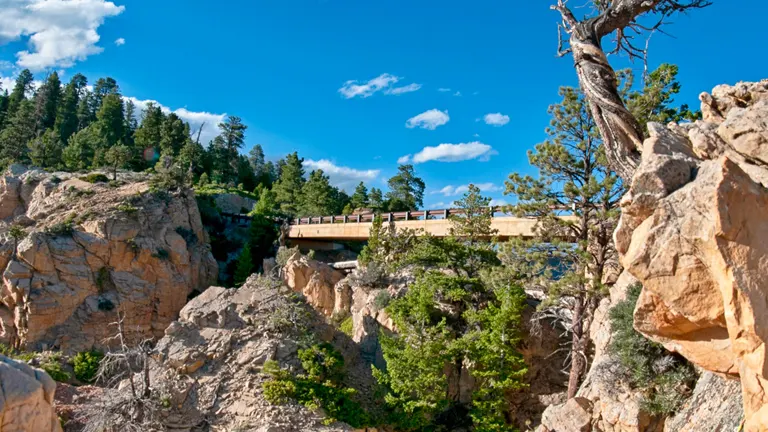
Based in Cedar City, Dixie National Forest is the largest National Forest in Utah, straddling the divide between the Great Basin and the Colorado River. The forest’s natural beauty is a source of inspiration to adventurers, offering countless opportunities to explore hiking trails, fishing spots, and camping sites amidst the enchanting backdrop of the American Southwest. Join us on a journey into the heart of this natural wonder, where each turn reveals a new chapter in the story of Utah’s remarkable landscape. Explore Dixie National Forest’s vast expanse of natural beauty, where the rugged terrain and serene landscapes offer a unique experience to those seeking adventure.
Characterizing Features of the Dixie National Forest
- Diverse Ecosystems: Dixie National Forest stands out for its remarkable diversity of ecosystems, ranging from low desert-like environments to high-elevation alpine landscapes. As you explore the forest’s vast expanse, you’ll encounter sparse desert-type vegetation in the lower elevations, giving way to a transition zone dominated by low-growing pinyon pine and juniper. Further up, the forest transforms into a lush realm featuring stands of aspen and conifers, including pine, spruce, and fir.
- Climatic Extremes: One of the defining characteristics of Dixie National Forest is its range of climatic extremes. The forest experiences precipitation ranging from 10 inches in the lower elevations to over 40 inches per year near Brian Head Peak. At higher elevations, the majority of annual precipitation falls as snow, creating a winter wonderland. Thunderstorms are common during July and August, often bringing heavy rains and making August the wettest month in some areas.
- Varied Elevations: The forest’s topography is marked by varying elevations, offering a visual feast for visitors. Elevations range from 2,800 feet near St. George to the towering 11,322 feet at Blue Bell Knoll on Boulder Mountain. The southern rim of the Great Basin, adjacent to the Colorado River, provides awe-inspiring scenery, characterized by multi-colored cliffs and steep-walled gorges carved by the Colorado River canyons.
- Historical Significance: Established as the Dixie Forest Reserve in 1905, the forest’s name is rooted in the local description of the warm southern part of Utah as “Dixie.” Originally managed by the General Land Office, it later became a National Forest in 1907 under the U.S. Forest Service. The consolidation of nearby national forests in the 1930s led to the retention of the name “Dixie National Forest,” reflecting the region’s historical ties to Utah’s warm Dixie.
- Rich Wildlife Habitat: Dixie National Forest provides a diverse and thriving habitat for a wide range of wildlife species. From elusive cougars and bobcats to majestic golden eagles and wild turkeys, the forest’s varied terrain supports a multitude of creatures. Big game hunting has traditionally been a major attraction, and more recently, there has been a growing interest in wildlife viewing and photography.
- Recreational Opportunities: Offering a plethora of recreational activities, Dixie National Forest caters to outdoor enthusiasts. With 26 developed campgrounds, five picnic sites, and group camping areas, the forest provides opportunities for camping, hunting, scenic driving, hiking, horseback riding, and more. Additionally, there are 83,000 acres of designated wilderness areas, including Pine Valley, Box-Death Hollow, and Ashdown Gorge, ensuring a mix of both primitive and developed recreational experiences.
- Archaeological Treasures: Beyond its natural wonders, Dixie National Forest holds archaeological treasures that speak to the region’s rich human history. Pictographs, petroglyphs, and artifacts reveal the presence of prehistoric and historic populations. The forest’s heritage program aims to interpret and preserve these clues, allowing visitors to explore and appreciate the area’s cultural significance.
In essence, Dixie National Forest encapsulates a tapestry of natural and cultural wonders, providing an immersive experience for those eager to connect with the diverse landscapes and historical narratives of southern Utah.
History
Established on September 25, 1905, as the Dixie Forest Reserve by the General Land Office, Dixie National Forest has a history rooted in southern Utah. The name “Dixie” comes from the local term for the warm southern part of Utah, which stuck after settlers arrived in 1851 to grow cotton for the Mormon Church. The forest’s name reflects its warm climate, a connection maintained since its inception.
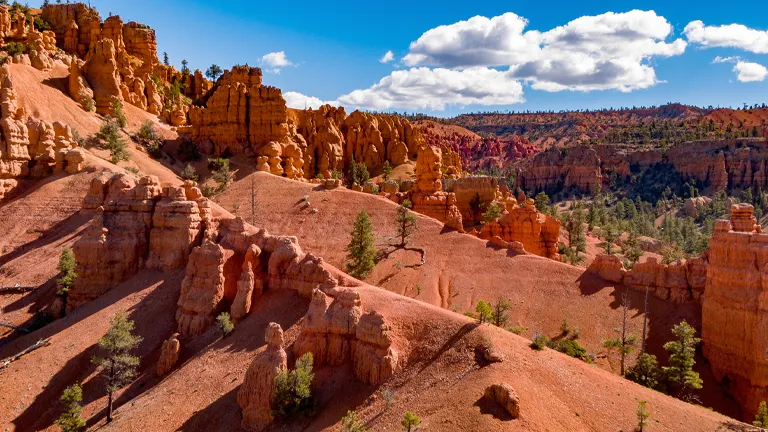
In 1906, the U.S. Forest Service took over management, officially designating Dixie Forest Reserve as a National Forest on March 4, 1907. The forest’s boundaries changed over time, including the addition of the western part of Sevier National Forest in 1922 and the full integration of Powell National Forest on October 1, 1944. Despite occasional local sentiments to change the name, bureaucratic complexities kept it as Dixie National Forest.
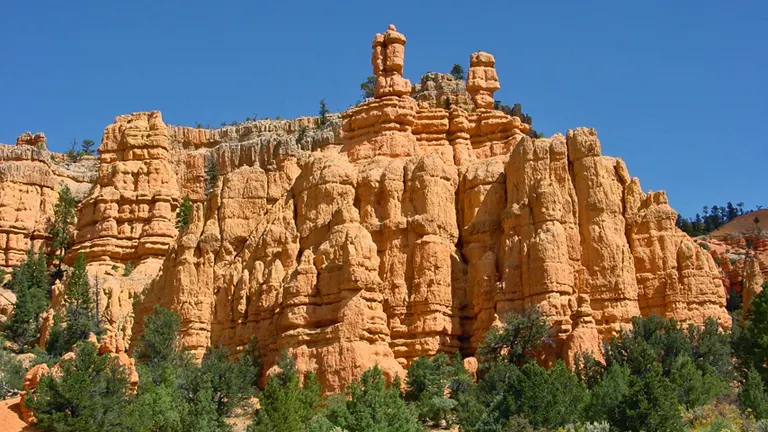
Beyond administrative changes, Dixie National Forest has a history reaching back to Native American cultures like the Desert-Archaic, Fremont, and Anasazi. Spanish explorers, such as Father Silvestre Veles de Escalante in 1776, ventured through the region, leaving the Old Spanish Trail. Trappers, traders, and gold hunters frequented the area between 1835 and 1850, establishing it as a well-defined trail with challenges from the local Paiute Indians.
The forest experienced a continuous influx of settlers and explorers, influencing the landscape and contributing to the region’s historical richness. Today, as the largest National Forest in Utah, Dixie National Forest’s history is woven into Utah’s “Dixie,” reflecting a legacy of human effort and a lasting connection between the land and its inhabitants.
Importance in Conservation and Recreation of Dixie National Forest
Dixie National Forest plays a crucial role in both conservation and recreation, serving as a vital piece of southern Utah’s ecological puzzle. From a conservation standpoint, the forest’s diverse ecosystems, ranging from low desert vegetation to high-elevation alpine environments, provide a sanctuary for a wide array of plant and animal species. Its varied elevations and climates contribute to the preservation of biodiversity, offering habitat for wildlife such as cougars, bobcats, golden eagles, and Utah prairie dogs. Additionally, the forest’s commitment to maintaining designated wilderness areas ensures the protection of these natural habitats.
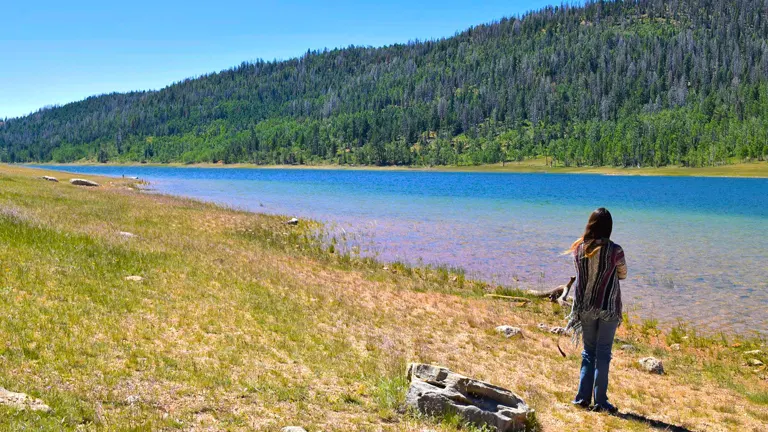
On the recreational front, Dixie National Forest welcomes outdoor enthusiasts with open arms. With over two million acres of pristine wilderness, it offers an extensive network of hiking trails, camping sites, and scenic drives. Visitors can explore the high-altitude plateaus, fish in mountain lakes, or simply enjoy the serenity of the landscape. The forest’s 83,000 acres of designated wilderness, including Pine Valley, Box-Death Hollow, and Ashdown Gorge, provide a haven for those seeking a more primitive and secluded outdoor experience. Dixie National Forest’s recreational opportunities not only contribute to the well-being of its visitors but also foster a deeper appreciation for the importance of conservation in preserving the natural splendor of the American Southwest.
Unique Location of Dixie National Forest
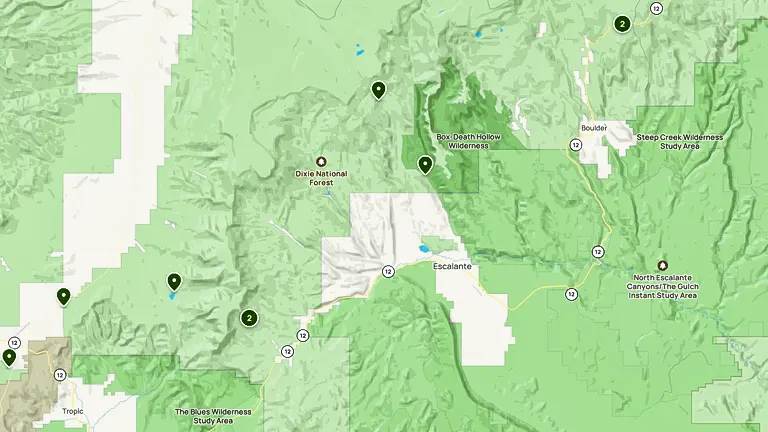
Located in the heart of southern Utah, Dixie National Forest occupies a unique and strategically important location in the region’s diverse landscape. Stretching for approximately 170 miles across the state, the forest straddles the geographical divide between the Great Basin and the Colorado River. This distinctive positioning contributes to the forest’s exceptional scenic variety, featuring everything from the rugged cliffs near the Colorado River to the high-elevation plateaus like Boulder Mountain. The southern rim of the Great Basin, where Dixie National Forest unfolds, showcases multi-colored cliffs and steep-walled gorges carved by the Colorado River canyons. This unique location not only makes the forest a haven for outdoor enthusiasts seeking diverse recreational opportunities but also highlights its significance as a vital ecological transition zone, where the Great Basin and Colorado River ecosystems converge, creating a mosaic of habitats that support a rich array of plant and animal life. Dixie National Forest’s distinctive geographical setting thus adds an extra layer of allure to its already captivating natural beauty.
Diverse Vegetation and Plant Species in Dixie National Forest
- Utah Juniper (Juniperus osteosperma): Found in the lower elevations of Dixie National Forest, the Utah Juniper is a hardy evergreen, well-adapted to arid conditions. Its twisted branches and scale-like leaves characterize the landscape, showcasing its resilience in more desert-like environments.
- Single-Leaf Pinyon Pine (Pinus monophylla): Alongside the Utah Juniper, the Single-Leaf Pinyon Pine is a common sight in the lower elevations. Recognizable by its short needles bundled in pairs, this small pine species plays a significant role in the ecological tapestry of the forest, demonstrating adaptability to the region’s challenging climate.
- Colorado Pinyon (Pinus edulis): Thriving in the transition zone of mid-elevations, the Colorado Pinyon is a low-growing pine species with distinct two-needle clusters. Its presence contributes to the diverse plant communities within Dixie National Forest, highlighting the unique characteristics of this intermediate zone.
- Quaking Aspen (Populus tremuloides): As elevation increases, the landscape transforms with the emergence of Quaking Aspen groves. Known for their fluttering leaves, these deciduous trees create visually stunning landscapes in higher altitudes, offering a striking contrast to the evergreen-dominated lower elevations.
- White Fir (Abies concolor): At the highest elevations, coniferous forests dominate, and the White Fir is a notable species in this upper zone. With its tall stature and soft needles, this fir species contributes to the overall biodiversity of Dixie National Forest, forming a key component of the high-elevation ecosystems.
- Engelmann Spruce (Picea engelmannii): Another coniferous species in the high-elevation zones is the Engelmann Spruce. Recognizable by its slender, blue-green needles, this spruce species is well-adapted to the colder and more elevated regions of the forest, playing a vital role in shaping the upper reaches of Dixie National Forest.
- Limber Pine (Pinus flexilis): Completing the trio of conifers in the highest elevations is the Limber Pine. Its flexible branches and long needles characterize this hardy pine species. As a resilient inhabitant of the alpine zones, the Limber Pine adds to the biodiversity and ecological resilience of Dixie National Forest.
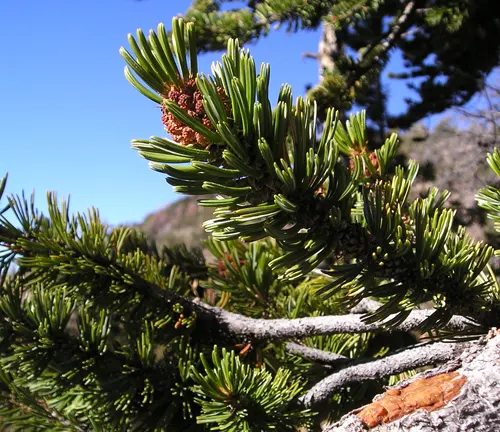
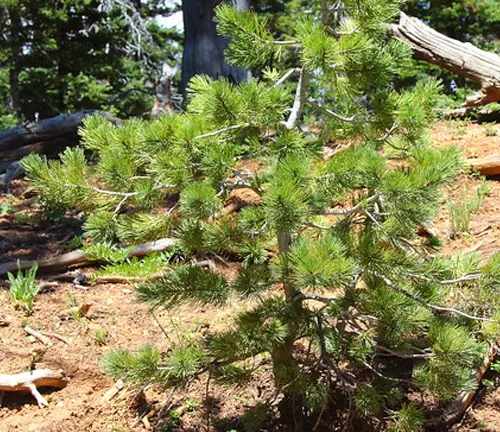
These plant species collectively contribute to the intricate ecological mosaic of Dixie National Forest, adapting to the varied elevations and climates that define this unique and diverse natural environment.
Fauna
- Cougar (Puma concolor): The elusive and majestic cougar, also known as mountain lion or puma, roams the diverse landscapes of Dixie National Forest. As a top predator, cougars play a crucial role in maintaining the ecological balance by controlling herbivore populations. Their presence underscores the wild and untamed nature of the forest.
- Bobcat (Lynx rufus): The adaptable bobcat is a skilled hunter found in Dixie National Forest. With its distinctive tufted ears and spotted coat, this elusive feline navigates various habitats within the forest. Bobcats contribute to the biodiversity by preying on small mammals, birds, and other smaller creatures.
- Golden Eagle (Aquila chrysaetos): The skies above Dixie National Forest are graced by the majestic Golden Eagle. Known for its impressive wingspan and keen eyesight, this raptor dominates the aerial domain. Golden Eagles are a symbol of the forest’s avian diversity and their presence adds to the rich tapestry of wildlife in the area.
- Cottontail Rabbit (Sylvilagus spp.): The cottontail rabbit, with its distinctive fluffy tail, is a common sight in the lower elevations of the forest. These small herbivores are integral to the food web, providing sustenance for predators like bobcats and birds of prey. Their adaptability allows them to thrive in diverse habitats.
- Wild Turkey (Meleagris gallopavo): The iconic wild turkey is a resident of Dixie National Forest, particularly in areas with mixed vegetation. With their striking plumage and distinctive calls, wild turkeys contribute to the avian diversity of the forest. They play a role in seed dispersal and insect control, further enhancing the ecosystem.
- Antelope (Antilocapra americana): In the vast meadows and plateaus of Dixie National Forest, antelope roam freely. Their speed and agility make them well-suited to the open terrain. The presence of antelope adds a touch of the prairie to the forest’s diverse ecosystems, showcasing the adaptability of wildlife within the region.
- Utah Prairie Dog (Cynomys parvidens): The Utah prairie dog, a keystone species, creates burrow systems in the meadows and grasslands of the forest. Their activities aerate the soil and provide habitat for other species. Conservation efforts for the Utah prairie dog contribute to maintaining the health of Dixie National Forest’s unique ecosystems.
- Blue Grouse (Dendragapus obscurus): The blue grouse, adapted to the higher elevations, is a distinctive bird species found in the coniferous forests of Dixie National Forest. Their mottled plumage provides excellent camouflage, and their presence reflects the forest’s ecological diversity, particularly in the alpine zones.
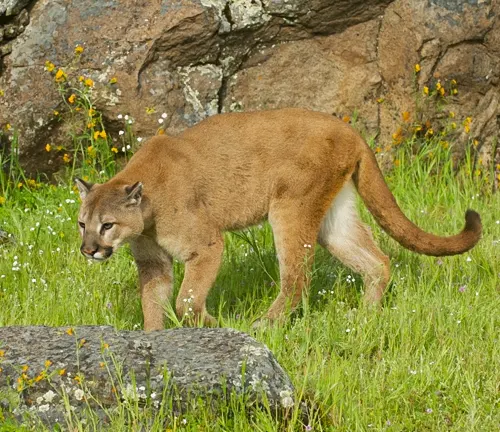
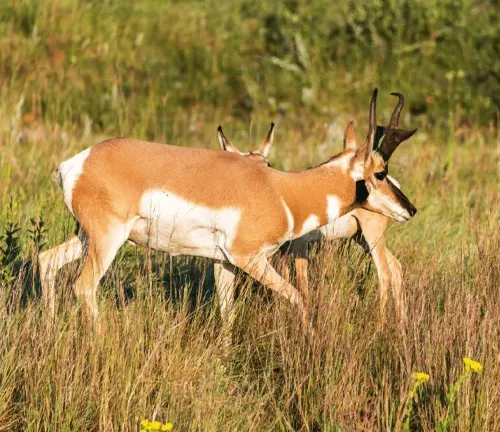
Dixie National Forest’s fauna represents a harmonious interplay of predators, herbivores, and avian species, showcasing the resilience and adaptability of wildlife in this diverse and ecologically significant environment.
Attractions in Dixie National Forest
1. Red Canyon

Located within Dixie National Forest, Red Canyon is a breathtaking natural wonder renowned for its vibrant red rock formations. Often referred to as a “mini Bryce Canyon,” Red Canyon offers a captivating preview of the geological splendor that characterizes the broader region. Visitors can explore the area through scenic drives, hiking trails, and witness the awe-inspiring beauty of towering hoodoos and sandstone cliffs.
2. Boulder Mountain
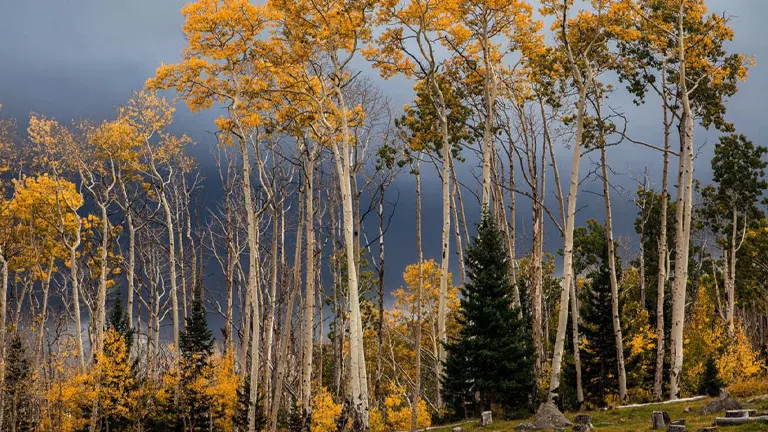
Boulder Mountain, one of the largest high-elevation plateaus in the United States, graces Dixie National Forest with its serene landscapes. Dotted with hundreds of small lakes, this area is a haven for outdoor enthusiasts. Fishing, hiking, and camping opportunities abound, providing a tranquil escape into the heart of the forest’s diverse ecosystems.
3. Panguitch Lake
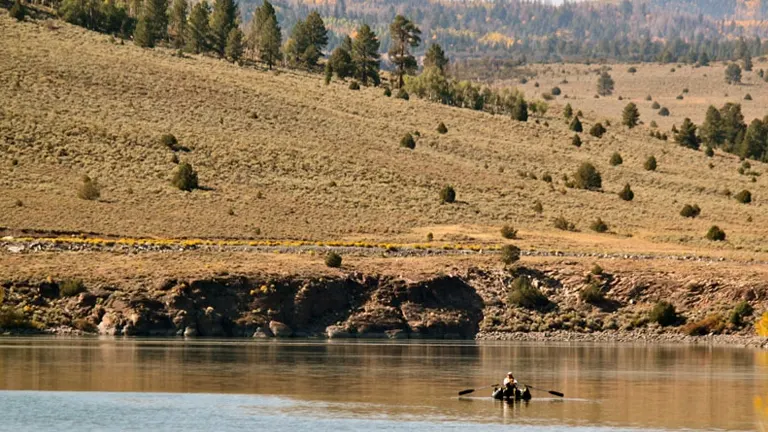
Panguitch Lake, surrounded by the picturesque scenery of Dixie National Forest, is a haven for anglers and nature enthusiasts. The lake offers excellent fishing opportunities for trout, making it a popular destination for those seeking a peaceful day by the water. The surrounding forested terrain adds to the charm, creating an ideal setting for camping and outdoor recreation.
4. Box-Death Hollow Wilderness
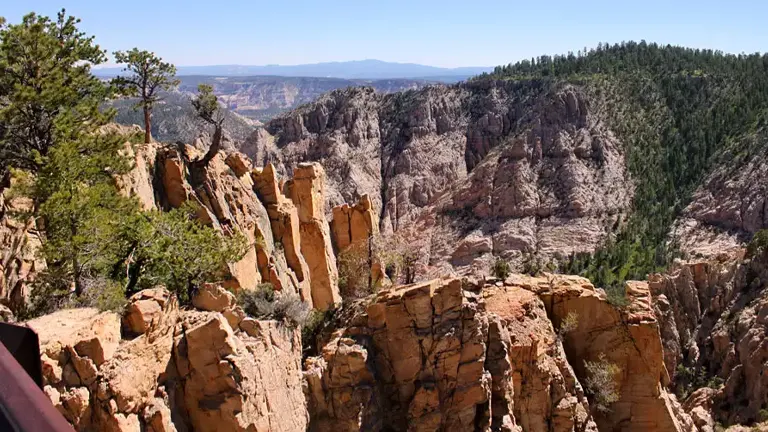
For those seeking a more secluded and rugged adventure, the Box-Death Hollow Wilderness presents an untamed paradise within Dixie National Forest. This designated wilderness area features deep canyons, meandering streams, and lush vegetation. Hiking trails lead adventurers through this pristine landscape, offering a chance to connect with nature in its raw and unspoiled state.
5. Powell Point
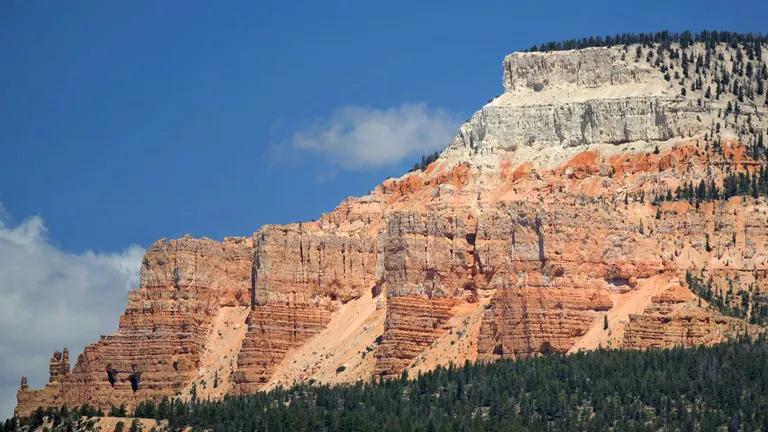
Powell Point provides a panoramic view that stretches for miles, allowing visitors to marvel at the vastness of Dixie National Forest and beyond. This viewpoint, accessible by car, provides a unique perspective of the forest’s varied terrain, from high-elevation plateaus to the rugged canyons below. Sunset views from Powell Point are particularly stunning, casting a warm glow over the diverse landscapes.
6. Hell’s Backbone Bridge
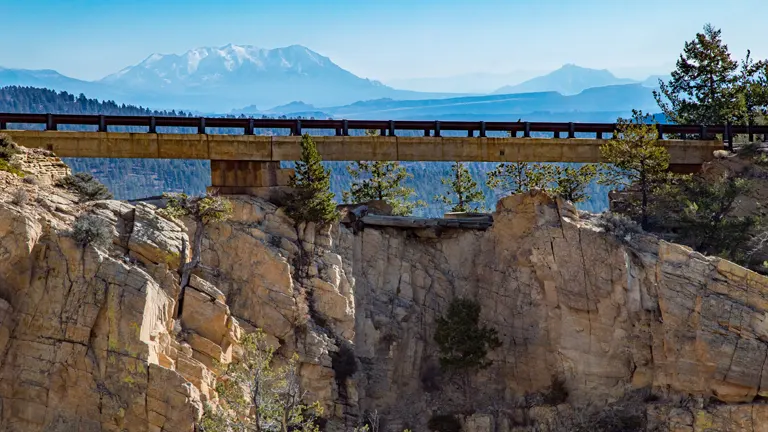
Hell’s Backbone Bridge is a remarkable engineering feat that spans across a deep gorge, offering a thrilling experience for those who traverse it. This narrow bridge provides stunning views of Death Hollow and the surrounding forested landscapes. The journey across Hell’s Backbone is not only an adventure in itself but also a gateway to the captivating scenery of Dixie National Forest.
7. Scenic Byway 12
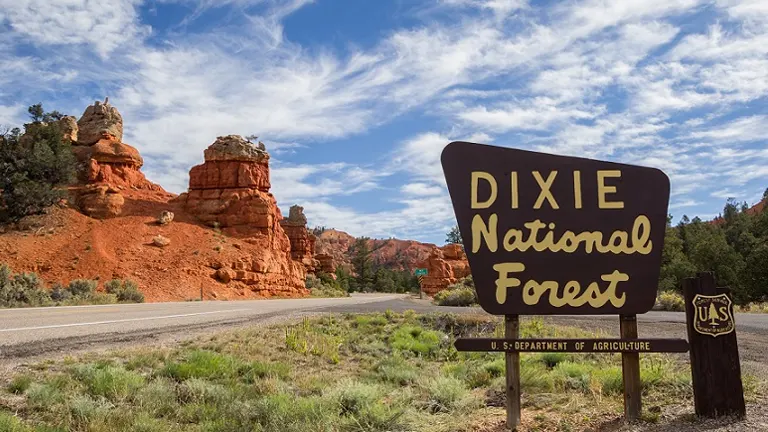
Running through the heart of Dixie National Forest, Scenic Byway 12 is a designated All-American Road renowned for its spectacular views and diverse landscapes. The journey along this scenic route takes travelers through red rock canyons, alpine forests, and expansive plateaus. Numerous pull-offs and viewpoints offer opportunities to appreciate the unique features of the forest.
Dixie National Forest’s attractions provide a varied tapestry of natural wonders, from iconic rock formations to serene lakeshores and untamed wilderness. Each destination within the forest offers a distinct and memorable experience, inviting visitors to explore the diverse facets of this captivating landscape.
Recreational Activities in the Dixie National Forest
1. Hiking and Nature Trails
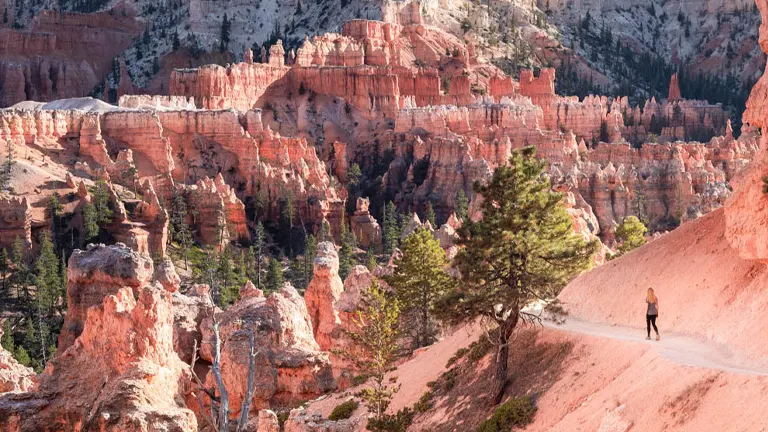
Dixie National Forest beckons outdoor enthusiasts with an extensive network of hiking and nature trails that cater to all skill levels. Whether you’re seeking a leisurely stroll amidst towering ponderosa pines or a challenging hike to witness panoramic vistas, the forest provides a diverse range of trails. Popular routes include those leading to scenic viewpoints, waterfalls, and unique geological formations, allowing visitors to immerse themselves in the natural beauty of the American Southwest.
2. Fishing at Panguitch Lake
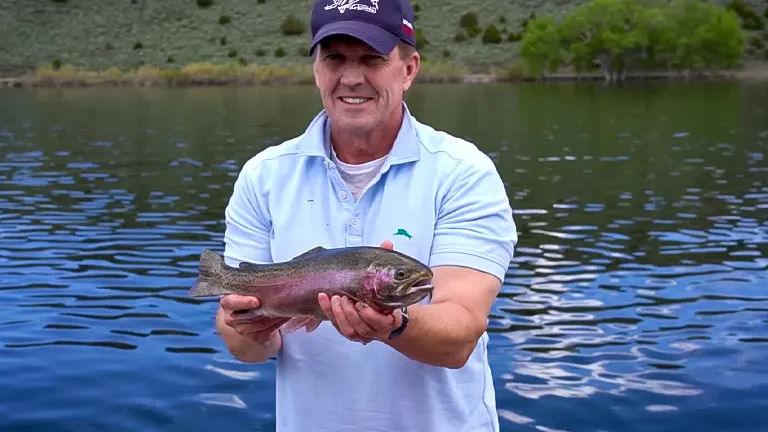
Panguitch Lake, ensconced within the forested landscapes, is a haven for fishing enthusiasts. Renowned for its pristine waters, the lake offers a rewarding experience for anglers seeking trout, including rainbow and cutthroat varieties. The tranquil surroundings, coupled with the thrill of a potential catch, make Panguitch Lake a popular destination for those who relish a serene day by the water.
3. Camping in Scenic Campgrounds
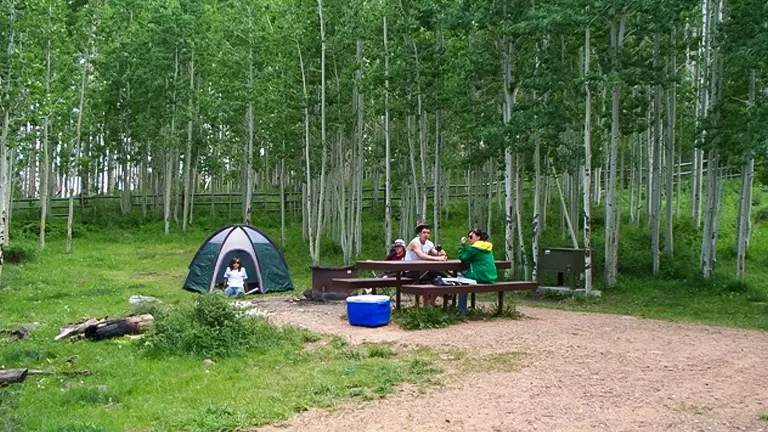
Dixie National Forest provides a plethora of camping opportunities across its 26 developed campgrounds. From the shores of Panguitch Lake to the alpine meadows near Boulder Mountain, these campgrounds cater to various preferences. Whether you prefer a rustic experience or seek amenities like fire pits and picnic tables, the forest’s campgrounds offer a chance to immerse yourself in the peaceful ambiance of nature.
4. Scenic Drives along Byway 12
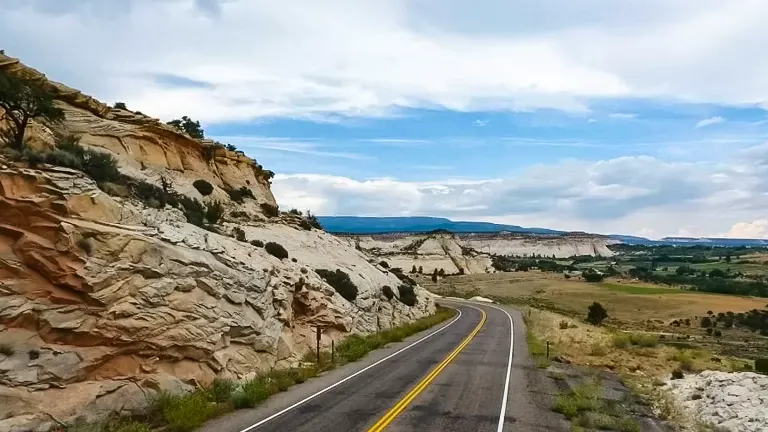
Embark on a journey through the heart of Dixie National Forest via Scenic Byway 12, an All-American Road celebrated for its breathtaking landscapes. This scenic drive takes travelers on a visual feast, passing through diverse terrains, including red rock canyons, alpine plateaus, and forested realms. Numerous pull-offs provide opportunities for photography and contemplation of the forest’s natural wonders.
5. Winter Activities: Cross-Country Skiing and Snowmobiling
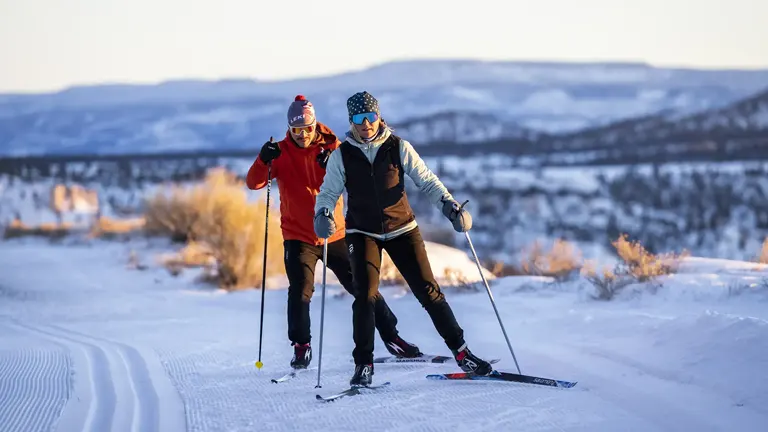
When winter blankets Dixie National Forest in snow, the landscape transforms into a snowy wonderland, offering opportunities for cross-country skiing and snowmobiling. The forest collaborates with state parks to maintain trails for these winter sports, allowing visitors to experience the serene beauty of snow-covered landscapes while engaging in invigorating outdoor activities.
6. Wildlife Viewing
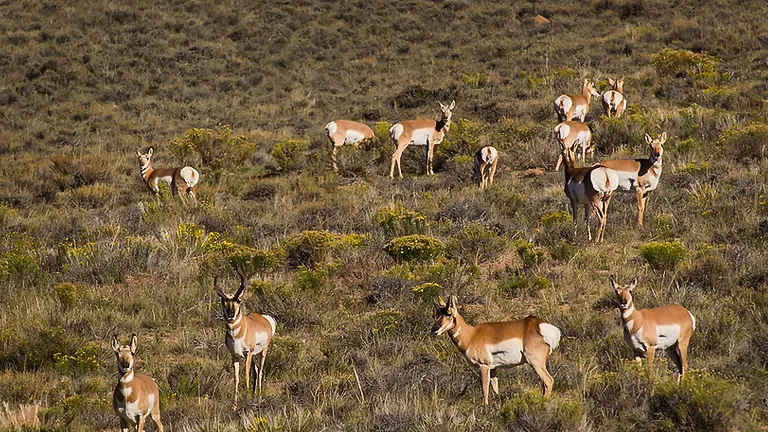
Dixie National Forest is a haven for wildlife, and avid nature enthusiasts can partake in wildlife viewing experiences. From the elusive cougar to the vibrant blue grouse, the forest supports a diverse range of species. Birdwatchers can spot golden eagles soaring in the skies, adding to the rich avian tapestry of the area. Patient observers may also catch glimpses of deer, antelope, and other forest inhabitants.
7. Heritage Exploration and Interpretive Programs
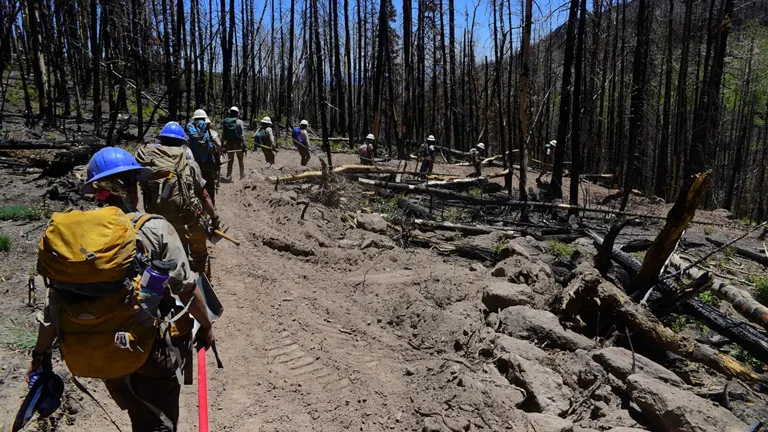
Immerse yourself in the cultural and historical fabric of Dixie National Forest through heritage exploration and interpretive programs. Delve into the stories of Native American cultures, early settlers, and the forest’s history. These programs aim to preserve and share the rich heritage of the region, offering visitors a deeper understanding of the land they explore.
Dixie National Forest’s recreational activities cater to a wide spectrum of interests, ensuring that visitors can tailor their experiences to match their preferences, whether seeking adventure, tranquility, or a cultural journey through time.
Facilities and Amenities in Dixie National Forest
- Campgrounds and Picnic Sites: Dixie National Forest boasts a network of 26 developed campgrounds, strategically located to offer a range of camping experiences. From lakeside camping near Panguitch Lake to forested retreats, these campgrounds provide essential amenities such as fire pits, picnic tables, and vault toilets. Whether you prefer a rustic experience or seek family-friendly sites, the forest’s campgrounds cater to diverse preferences, allowing visitors to immerse themselves in the tranquility of nature.
- Visitor Centers and Information Stations: Throughout Dixie National Forest, visitor centers and information stations serve as gateways to the forest’s wonders. Headquartered in Cedar City, these facilities provide valuable resources, maps, and knowledgeable staff to assist visitors in planning their exploration. Whether you’re a first-time visitor or a seasoned adventurer, these centers offer insights into the diverse landscapes, recreational activities, and cultural history of the forest.
- Interpretive Programs and Heritage Exploration: Delve into the rich cultural tapestry of Dixie National Forest through interpretive programs and heritage exploration initiatives. These programs, often conducted at visitor centers, aim to educate and engage visitors in the historical and cultural aspects of the forest. From Native American history to the stories of early settlers, these initiatives enhance the overall experience, fostering a deeper connection to the land.
- Scenic Byways and Viewpoints: Navigating through Dixie National Forest is made seamless with designated scenic byways and viewpoints. Scenic Byway 12, an All-American Road, takes travelers on a visual journey through diverse terrains. Numerous viewpoints along the route provide opportunities for breathtaking vistas, allowing visitors to pause, appreciate, and capture the natural beauty that unfolds before them.
- Winter Recreation Facilities: During the winter months, Dixie National Forest transforms into a snowy playground, and the forest collaborates with state parks to maintain trails for winter activities. Cross-country skiing and snowmobiling enthusiasts can access well-maintained trails, providing a unique perspective of the forest blanketed in snow. These facilities ensure that winter visitors can engage in invigorating outdoor activities while surrounded by the serene beauty of a winter landscape.
- Fishing Access Points: Panguitch Lake and other water bodies within Dixie National Forest offer excellent fishing opportunities, and the forest provides well-maintained fishing access points. These points facilitate anglers in reaching prime fishing spots, enhancing the overall fishing experience. Whether you’re a novice or an experienced angler, these access points contribute to the accessibility and enjoyment of fishing within the forest.
- Educational Programs for Youth: Dixie National Forest prioritizes educational engagement for younger visitors, offering programs tailored for youth. These educational initiatives, often conducted in collaboration with schools or youth organizations, aim to instill a love for nature, conservation, and an understanding of the forest’s ecological importance. By fostering a sense of stewardship, these programs contribute to the long-term preservation of Dixie National Forest.
Dixie National Forest’s facilities and amenities are designed to enhance the visitor experience, providing essential resources, educational opportunities, and well-maintained spaces for a diverse range of recreational activities. Whether seeking information, cultural insights, or a serene camping spot, the forest’s amenities cater to the varied needs of its visitors.
Tips for Visiting Dixie National Forest
- Plan According to Seasons: Dixie National Forest experiences diverse climates and elevation changes, so plan your visit according to the seasons. Summer offers warm temperatures for hiking and camping, while fall showcases vibrant foliage. Winter transforms the landscape into a snowy wonderland, ideal for winter sports. Spring brings blossoming wildflowers. Check weather forecasts and road conditions to make the most of your visit.
- Stay Informed with Visitor Centers: Take advantage of the visitor centers and information stations within the forest. These hubs provide maps, trail information, and knowledgeable staff to help you plan your activities. Whether you’re a seasoned explorer or a first-time visitor, the visitor centers offer valuable insights into the forest’s features, ensuring a well-informed and enjoyable experience.
- Respect Wildlife and Nature: Dixie National Forest is a haven for wildlife, so approach encounters with respect. Keep a safe distance, avoid feeding animals, and observe quietly. Practice Leave No Trace principles by packing out your trash and minimizing your impact on the environment. By respecting nature, you contribute to the preservation of the forest’s delicate ecosystems.
- Pack Essentials for Outdoor Activities: Whether you’re hiking, camping, or fishing, ensure you pack essentials. Bring sufficient water, snacks, sunscreen, and appropriate clothing for changing weather conditions. If engaging in winter activities, carry winter gear. Having the right equipment ensures a comfortable and safe outdoor experience within the varied landscapes of Dixie National Forest.
- Explore Scenic Byway 12: Don’t miss the opportunity to explore Scenic Byway 12, an All-American Road that traverses Dixie National Forest. This scenic route offers spectacular views and diverse landscapes. Numerous viewpoints along the byway provide excellent photo opportunities and a chance to appreciate the unique features of the forest. Take your time to savor the journey.
- Check Trail Conditions and Closures: Before embarking on hiking or other trail-based activities, check for trail conditions and possible closures. Weather, maintenance, or wildlife management may affect accessibility. Stay informed by consulting with park rangers, checking online resources, or contacting visitor centers. This ensures a safe and enjoyable exploration of the forest’s trails.
- Participate in Interpretive Programs: Immerse yourself in the cultural and historical aspects of Dixie National Forest by participating in interpretive programs. These programs, often organized by the forest service, provide valuable insights into the region’s Native American history, early settlement, and ecological significance. Engaging with these programs enhances your connection to the land.
- Respect Heritage and Historical Sites: Dixie National Forest holds historical and cultural significance, so respect heritage sites and artifacts. Follow established trails, avoid touching petroglyphs or ancient structures, and adhere to any posted guidelines. Preserving these sites ensures that future generations can also appreciate the rich history of the forest.
- Prepare for Altitude Changes: Dixie National Forest spans a range of elevations, from lower desert areas to alpine plateaus. Be mindful of altitude changes, especially if you’re not acclimated to higher elevations. Take it easy during the first day to avoid altitude sickness, stay hydrated, and be aware of any health concerns related to changing elevations.
- Check for Permits and Regulations: Depending on your activities, certain permits or regulations may apply. Check if camping, fishing, or other recreational activities require permits, and ensure you comply with all forest regulations. This helps in maintaining the integrity of the forest and ensures a smooth and lawful visit.
By following these tips, you’ll be well-prepared to make the most of your visit to Dixie National Forest, ensuring a memorable and respectful exploration of its diverse landscapes and natural wonders.
Recommendation
I strongly recommend exploring Dixie National Forest for a captivating blend of natural beauty and historical relevance. This forest, renowned for its varied ecosystems, iconic landmarks, and recreational opportunities, offers a unique and immersive experience. Immerse yourself in reflective outdoor activities such as hiking and observing wildlife, actively contributing to ongoing conservation efforts. The scenic trails, historic sites, and collaborative conservation endeavors make Dixie National Forest a vital destination for those seeking a harmonious union of nature and recreational exploration.
Conclusion
In summary, Dixie National Forest, spanning nearly two million acres in southern Utah, showcases a diverse tapestry of natural wonders. From captivating canyons and rock formations to tranquil lakes and towering ponderosa pines, the forest encompasses various ecosystems and elevations. As Utah’s largest National Forest, it straddles the Great Basin and the Colorado River, boasting a rich history since its establishment in 1905. Today, beyond offering recreational opportunities like hiking and camping, Dixie National Forest plays a crucial role in conservation efforts. Whether exploring plateaus, enjoying winter activities, or participating in interpretive programs, visitors experience a landscape that epitomizes the enduring connection between nature and its inhabitants, inviting all to uncover the timeless beauty and ecological significance of this natural gem.
FAQs
- What makes Dixie National Forest unique among Utah’s National Forests?
Dixie National Forest stands out as the largest National Forest in Utah, spanning almost two million acres and offering a diverse range of ecosystems, from high-altitude plateaus to canyons and lakes. - What recreational activities can I enjoy in Dixie National Forest?
The forest provides a plethora of recreational opportunities, including hiking, camping, fishing, scenic drives along Byway 12, winter activities like cross-country skiing and snowmobiling, and interpretive programs to explore the rich cultural and historical aspects. - Are there any notable landmarks within Dixie National Forest?
Yes, Dixie National Forest is home to iconic landmarks like Boulder Mountain, one of the largest high-elevation plateaus in the United States, and Scenic Byway 12, renowned for its breathtaking views of varied landscapes. - What wildlife can I expect to encounter in the forest?
The forest supports a diverse range of wildlife, including cougars, bobcats, blue grouse, golden eagles, deer, antelope, and the Utah prairie dog. Birdwatchers can also spot various avian species. - How is the climate in Dixie National Forest throughout the year?
The forest experiences climatic extremes, with temperatures exceeding 100°F in summer near St. George and winter lows below -30°F on the plateaus. Precipitation ranges from 10 inches in lower elevations to over 40 inches near Brian Head. - What is the significance of the name “Dixie” in relation to the forest?
The name “Dixie” originated from the warm southern part of Utah, likened to the deep south. Settlers, predominantly from the southeastern United States, started calling it “Dixie,” and the name stuck due to the region’s warm climate. - How can I contribute to conservation efforts in Dixie National Forest?
Visitors can actively participate in conservation by practicing Leave No Trace principles, respecting wildlife and nature, and staying informed about ongoing initiatives. Volunteering for organized conservation projects is also encouraged. - Are there educational programs for children in Dixie National Forest?
Yes, the forest offers educational programs tailored for youth, aiming to instill a love for nature, conservation, and an understanding of the forest’s ecological importance. These programs may be organized in collaboration with schools or youth organizations.
As you leave Dixie National Forest, it’s hard not to feel a sense of awe at the natural beauty that surrounds you. Whether you spent your time hiking through the forest, fishing in one of its many streams, or simply taking in the stunning views, you’ll likely leave with memories that will last a lifetime. And while the forest is certainly a place of natural wonder, it’s also a reminder of the importance of preserving our planet’s precious resources for generations to come. So as you say goodbye to Dixie National Forest, take a moment to reflect on the beauty of the natural world and the role we all play in protecting it.



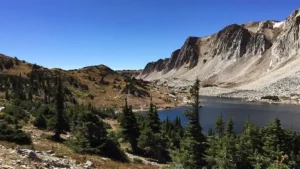
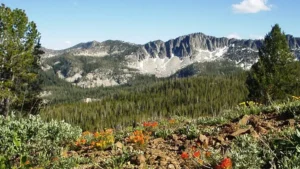



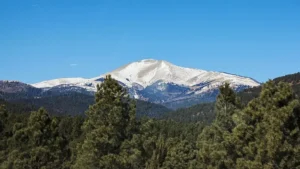
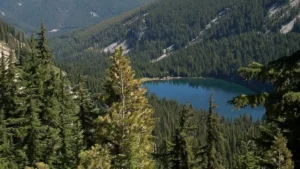

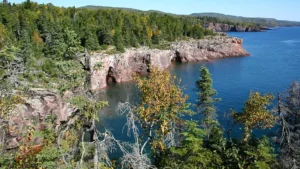
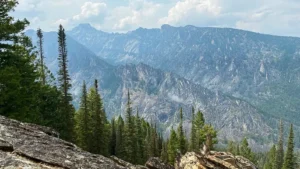

Leave your comment